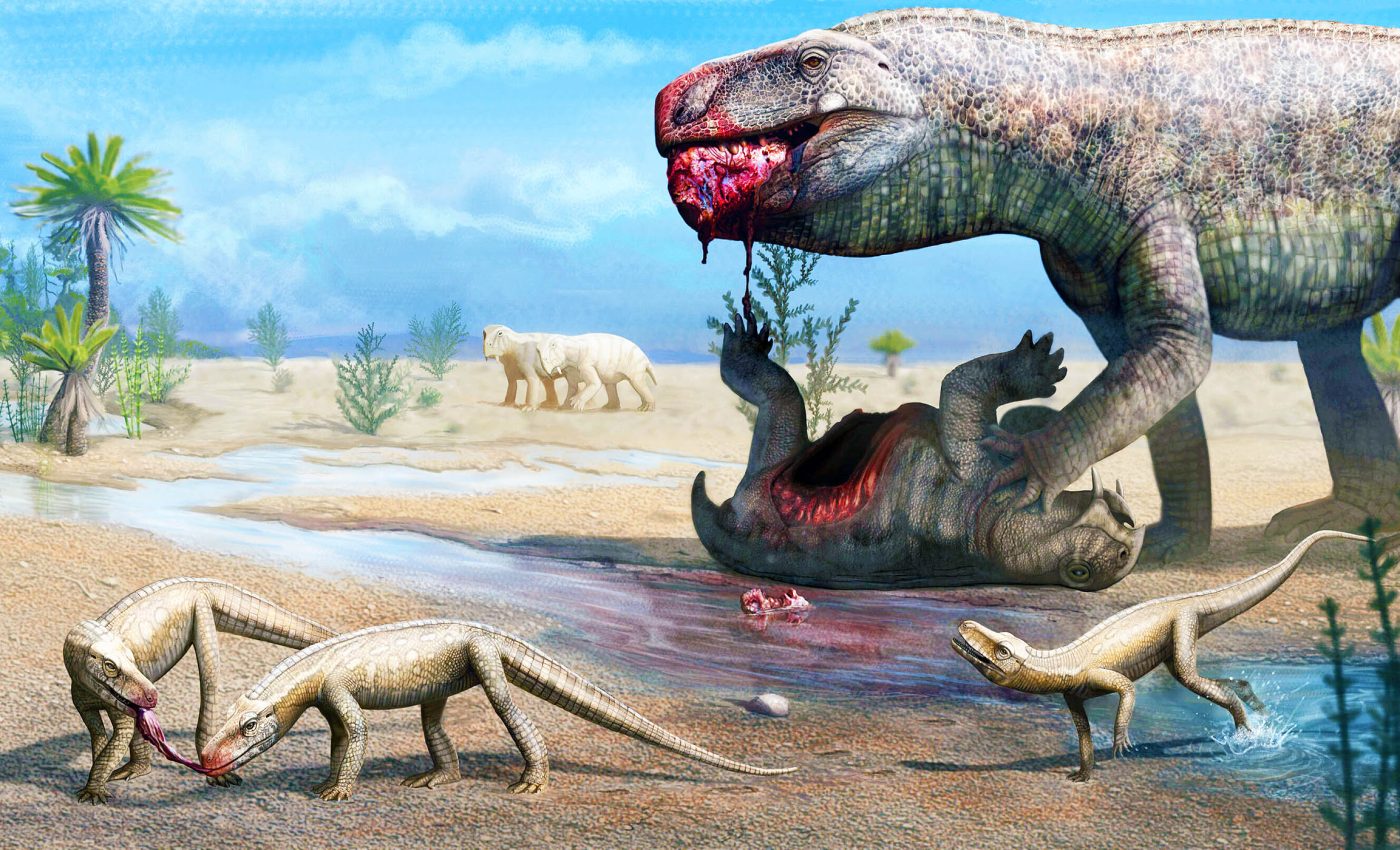
Ancient crocodile-like reptile roamed Earth 250 million years ago
Earth’s history is filled with marvelous creatures, some of which still leave experts baffled today, such as pseudosuchians.
An example of one such creature is the new predatory reptile species discovered recently, located in the heart of Brazil, making a noteworthy addition to the tales of the Triassic period.
This latest find sheds light on an ancient lineage of crocodile-like reptiles known as pseudosuchians, named Parvosuchus aurelioi. Now, let’s go on a journey to truly understand these “false crocodiles” and their role in our planet’s past.
Triassic tales of pseudosuchians
Before dinosaurs took the stage, pseudosuchians strutted across Earth’s surface for all to see. Inhabiting our planet approximately 252 to 201 million years ago, during the Triassic period, they were some of the most common quadruped reptiles of the time.
Their existence is best depicted by those who were at the top of the food chain – the massive carnivorous pseudosuchians.
Meanwhile, the gracilisuchids, smaller relatives to these apex predators, shared this period, with known traces of them in regions like China and Argentina.
Our tale’s hero, Rodrigo Müller, a scientist from Brazil, has added color to our understanding of pseudosuchians. Let’s delve deeper.
Pseudosuchians were a fascinating clan
The pseudosuchians, or “false crocodiles”, belonged to an diverse clade of archosaurs, siblings to modern birds and crocodiles and their extinct kin.
They thrived, diversified, and adapted, showing a range of sizes, shapes, and lifestyles that were as varied as the environments they called home. They can be classified into a few notable groups:
- Aetosauria: Heavily armored, plant-eating creatures, most noted for their wide, flat bodies and short legs.
- Ornithosuchidae: The “bird crocs”, an interesting mix of bird and crocodile features, and likely were active predators.
- Rauisuchidae: The true titans of their time, being large predators with robust limbs, and a fearsome bite.
- Crocodylomorpha: The ancestors of today’s crocodiles, which were at first small and terrestrial, but later evolved semi-aquatic capabilities.
Anatomy of ancient adaptability
Pseudosuchians showcased a stunning array of anatomical features that embodied their adaptability and evolutionary success. Their skull shapes and teeth hinted at their varied diets and ways of life.
The predator species had sharp, serrated teeth for tearing flesh, while those that were herbivores had flatter teeth for grinding plant material.
Similarly, their limb structures differed dramatically based on their lifestyle. For instance, the rauisuchids had strong, pillar-like limbs befitting their ground-dwelling predatory lifestyle. On the other hand, early crocodylomorphs had finer limbs, suited for both land and water.
Another significant feature seen in many pseudosuchians, especially aetosaurs, was the presence of extensive body armor composed of bony plates, or osteoderms. This armor not only provided protection but may have also played a part in heat regulation.
Triassic ecosystem and pseudosuchian roles
Pseudosuchians not only survived but thrived in various ecological niches. Species like the rauisuchids ruled as dominant terrestrial predators, while aetosaurs served as their ecosystem’s primary herbivores. Some pseudosuchians even enjoyed an omnivorous or generalist diet.
Unfortunately, most pseudosuchians disappeared at the close of the Triassic period, succumbing to a cocktail of volcanic activity, climate change, and competition with emerging archosaurs like early dinosaurs.
However, the crocodylomorphs’ lineage persisted and evolved into the variety of crocodilians we see today.
New Brazilian discovery: Parvosuchus aurelioi
Let’s return to our recent discovery by Rodrigo Müller. He found a new species of gracilisuchid from a specimen located in the Santa Maria Formation in Brazil.
Aged around 237 million years old, the partial skeleton consists of a full skull, 11 dorsal vertebrae, a section of the pelvis, and partially preserved limbs.

Christened Parvosuchus aurelioi, the name is a tribute to the amateur paleontologist Pedro Lucas Porcella Aurélio, who chanced upon the fossil materials.
This small croc-like creature is estimated to have been less than one meter in length, sporting long slender jaws filled with pointy teeth that curved backward.
This fascinating find marks the first such species confirmed from Brazil and brings attention to the incredible diversity among pseudosuchians during the Triassic period.
From Triassic times to modern day
This journey through the Triassic period and the world of pseudosuchians serves as a testament to Earth’s rich and diverse history.
The discovery of Parvosuchus aurelioi in Brazil marks a significant milestone in unraveling the vast legacy of these ancient reptiles. It reminds us of the magnificent biodiversity that once painted our planet’s landscapes, with creatures both great and small.
The understanding gleaned from studying pseudosuchians provides insights into our world’s ecological past, showcasing the adaptability and resilience of life.
As we continue unearthing the archives of Earth’s past, every new discovery, like Parvosuchus aurelioi, brings us one step closer to understanding life’s magnificent tapestry and how it has evolved over millions of years.
The full study was published in the journal Scientific Reports.
—–
Like what you read? Subscribe to our newsletter for engaging articles, exclusive content, and the latest updates.
Check us out on EarthSnap, a free app brought to you by Eric Ralls and Earth.com.
—–













